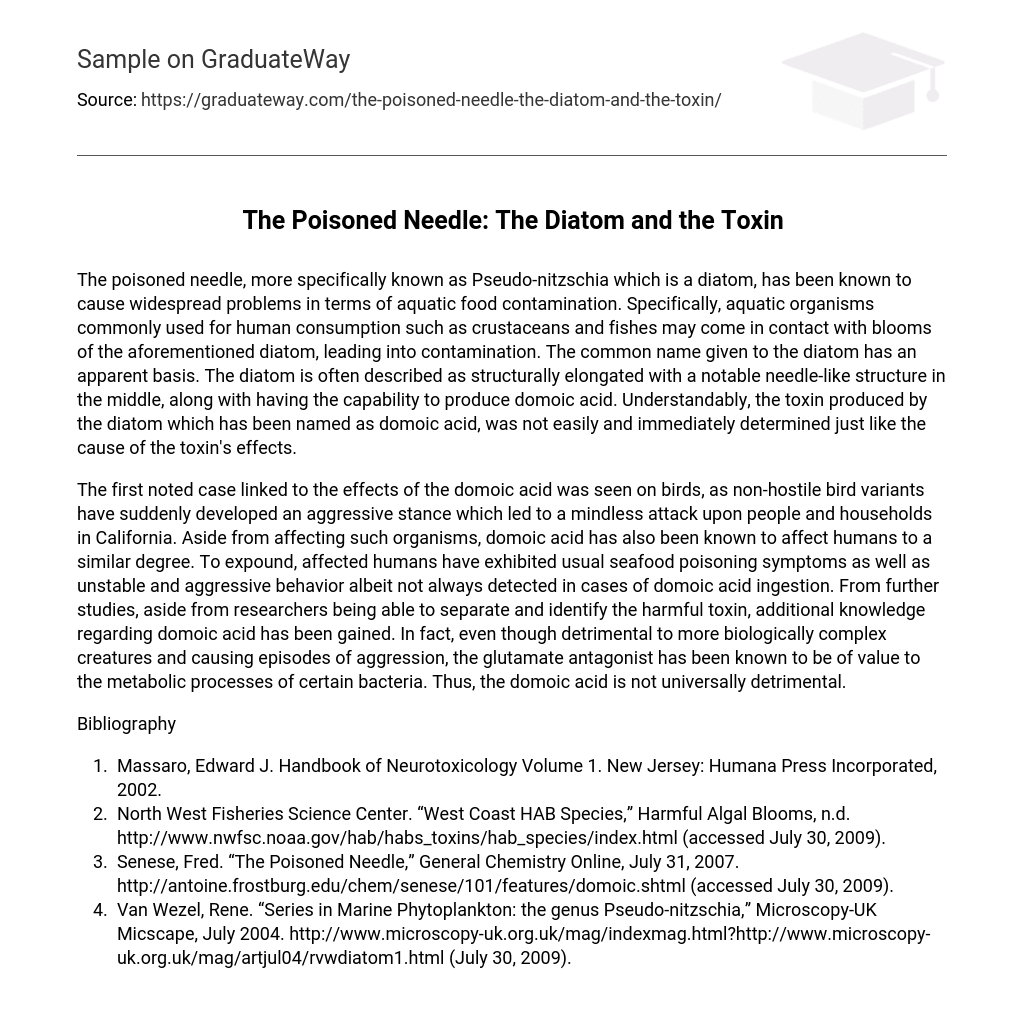The poisoned needle, more specifically known as Pseudo-nitzschia which is a diatom, has been known to cause widespread problems in terms of aquatic food contamination. Specifically, aquatic organisms commonly used for human consumption such as crustaceans and fishes may come in contact with blooms of the aforementioned diatom, leading into contamination. The common name given to the diatom has an apparent basis. The diatom is often described as structurally elongated with a notable needle-like structure in the middle, along with having the capability to produce domoic acid. Understandably, the toxin produced by the diatom which has been named as domoic acid, was not easily and immediately determined just like the cause of the toxin’s effects.
The first noted case linked to the effects of the domoic acid was seen on birds, as non-hostile bird variants have suddenly developed an aggressive stance which led to a mindless attack upon people and households in California. Aside from affecting such organisms, domoic acid has also been known to affect humans to a similar degree. To expound, affected humans have exhibited usual seafood poisoning symptoms as well as unstable and aggressive behavior albeit not always detected in cases of domoic acid ingestion. From further studies, aside from researchers being able to separate and identify the harmful toxin, additional knowledge regarding domoic acid has been gained. In fact, even though detrimental to more biologically complex creatures and causing episodes of aggression, the glutamate antagonist has been known to be of value to the metabolic processes of certain bacteria. Thus, the domoic acid is not universally detrimental.
Bibliography
- Massaro, Edward J. Handbook of Neurotoxicology Volume 1. New Jersey: Humana Press Incorporated, 2002.
- North West Fisheries Science Center. “West Coast HAB Species,” Harmful Algal Blooms, n.d. http://www.nwfsc.noaa.gov/hab/habs_toxins/hab_species/index.html (accessed July 30, 2009).
- Senese, Fred. “The Poisoned Needle,” General Chemistry Online, July 31, 2007. http://antoine.frostburg.edu/chem/senese/101/features/domoic.shtml (accessed July 30, 2009).
- Van Wezel, Rene. “Series in Marine Phytoplankton: the genus Pseudo-nitzschia,” Microscopy-UK Micscape, July 2004. http://www.microscopy-uk.org.uk/mag/indexmag.html?http://www.microscopy-uk.org.uk/mag/artjul04/rvwdiatom1.html (July 30, 2009).





